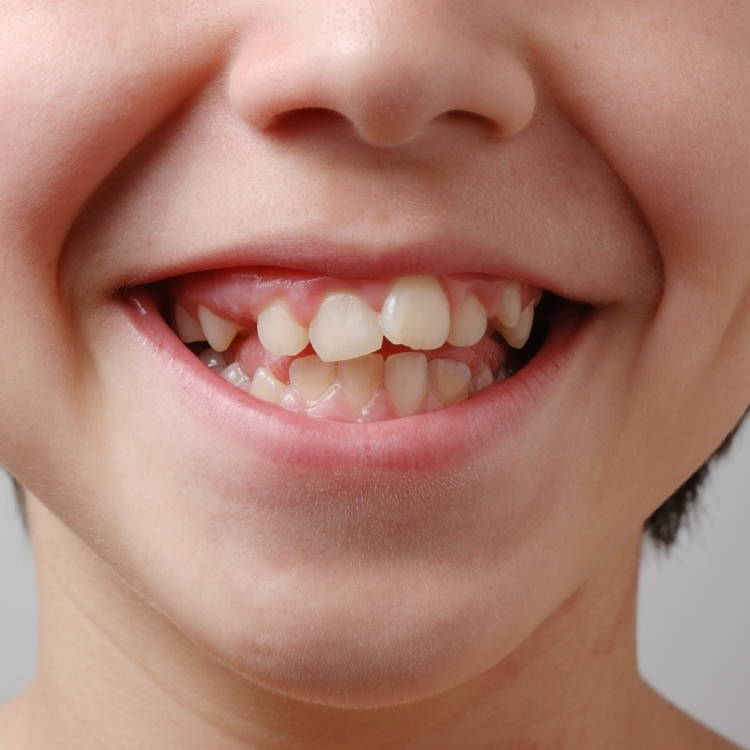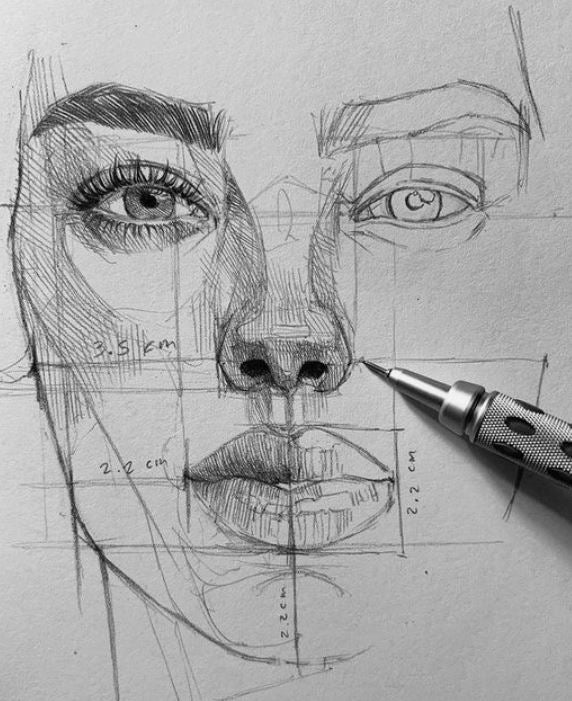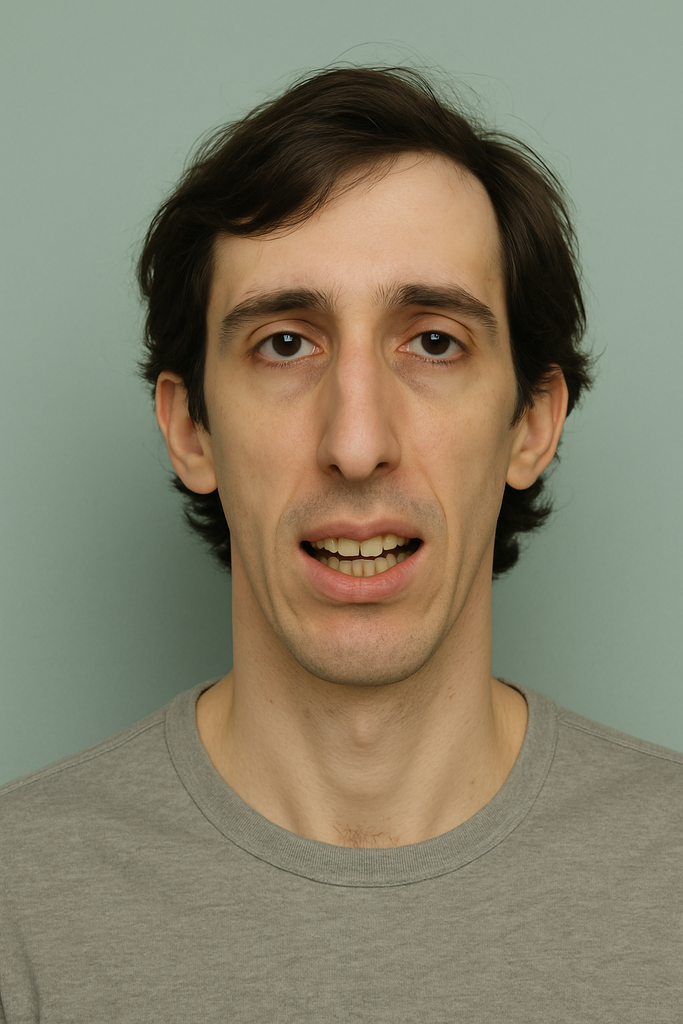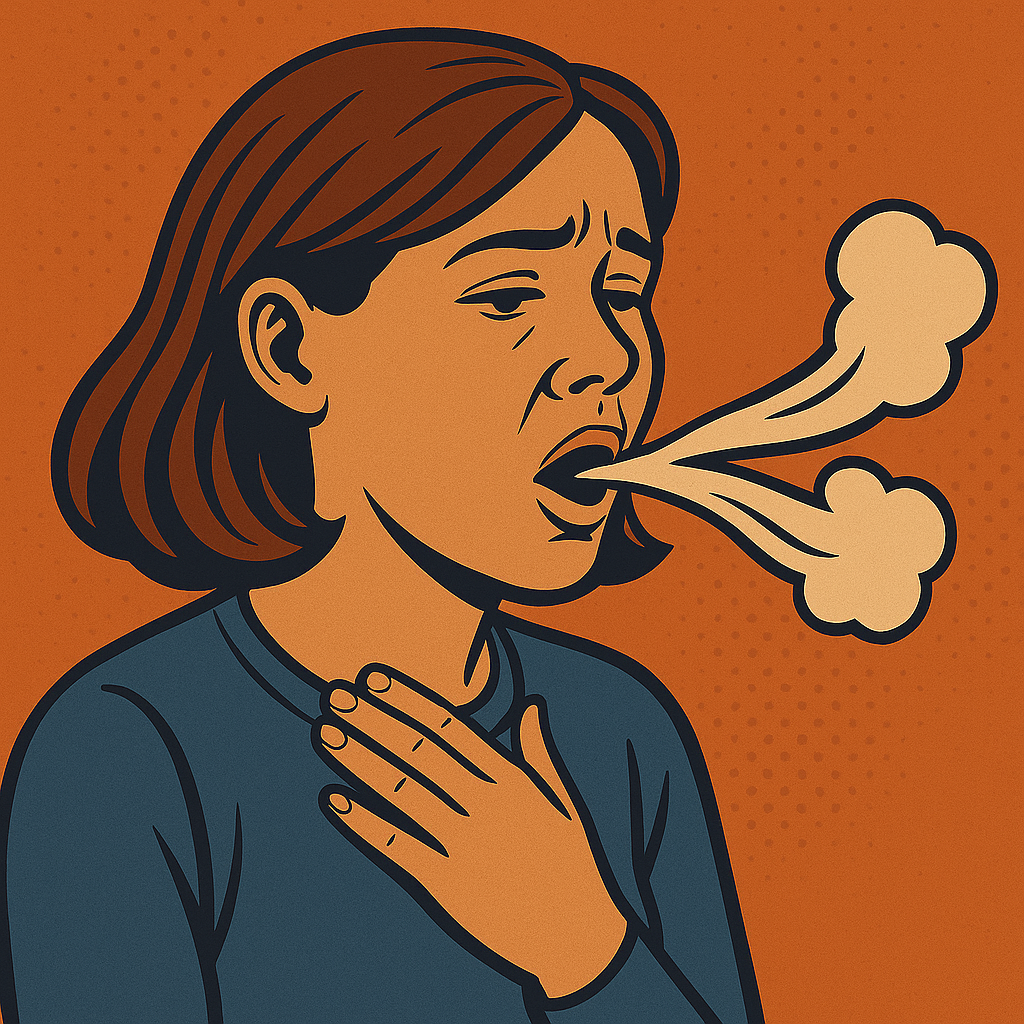Tongue Thrust Treatment in Ottawa – Improve Swallowing, Speech, and Dental Alignment
Tongue thrust can cause speech issues, swallowing problems, and even push teeth out of place. Our therapy gently retrains the muscles for lasting change.
Referred by your Orthodontist, Speech Pathologist, Dentist, or Doctor, for Tongue Thrusting?
Do you have an:
Open Bite | Overbite | Crossbite: Dental Misalignment
Speech Impediment
Esthetic Concerns | Digestive Issues | Jaw Discomfort

Discover the Signs & Symptoms of Tongue Thrusting:

Dental Malocclusion
Prolonged tongue thrusting can exert pressure on the teeth, leading to misalignment or malocclusions such as an open bite, overbite, or crossbite.
Digestive Problems
A tongue thrust can disrupt the normal chewing, swallowing and digestion action causing aerophagia.
TMJ Disorder
The abnormal swallowing pattern associated with tongue thrusting can place stress on the jaw joint.
Speech Difficulties
Tongue thrusting can affect speech patterns and articulation. It may result in lisping and difficulty producing certain sounds.
Esthetic Concerns
May cause elongated face, an open-mouth posture, or a protruding upper or lower lip due to the continuous pressure on the surrounding structures.
Mouth Breathing
Tongue thrusting may develop into mouth breathing contributing to dry mouth, bad breath, and cavities.
The Orofacial Myofunctional Therapy Process

01. Book a Free Consultation
- Meet your Orofacial Myologist.
- Discuss your symptoms.
- Be introduced to the process.
02. Comprehensive New Patient Exam
- Comfortable head/neck/oral exam.
- Diagnose disorders.
- Discuss personalized treatment plan.

03. Frequent Exercise Appointments
- Learn exercise. Practice daily.
- Understand goal of exercise.
- Perfect technique then graduate to next stage.

04. Therapy Completion
- Beneficial new habits are now subconscious.
- Breathe Better, Sleep Better, Feel Better.
The Why & How of Orofacial Myofunctional Therapy

What we do
Neuromuscular re-education in Orofacial Myofunctional Therapy involves training and re-patterning the muscles for better oral and facial function. It corrects improper muscle habits, improves coordination, and promotes a healthier orofacial system. Through targeted exercises, it enhances muscle control, strength, and coordination, leading to improved overall well-being.
How we do it
By focusing on the muscles and tissues of the upper airway, the tongue, jaw, face, head, and neck, we utilize tailored exercises to tone or relax these areas. Within a year, we address the disorder from its foundation, rather than using a band-aid approach. Our goal is to facilitate lasting positive change by resetting detrimental habits and targeting the root cause of the issue.
Best age to start
All ages can benefit from our services, though Tongue Thrust elimination is best started from 7 years old and up. While children tend to experience significant impact due to the adaptability of their oral-facial structures during the growth stage, adults can also greatly benefit from targeted muscle toning and relaxation. This can significantly improve the aging process and enhance the quality of life in their senior years. It's never too late to make a positive difference in your health.
Free Consultation
Everyone is eligible for a free consultation, regardless of age. This provides an excellent opportunity to have your questions answered and meet your Orofacial Myofunctional Therapist in Ottawa, ON.
Frequently Asked Questions
Q: What is tongue thrust?
A: Tongue thrust is a habit where the tongue pushes forward against or between the teeth during swallowing, speaking, or even at rest. This can lead to misaligned teeth, open bite, or orthodontic relapse.
Q: Can myofunctional therapy fix tongue thrust?
A: Yes. Myofunctional therapy helps retrain tongue posture, strengthen oral muscles, and restore proper swallowing patterns. Many people see lasting results without needing repeat orthodontic treatment.
Q: What causes tongue thrust?
A: Common causes include prolonged thumb sucking or pacifier use, allergies or mouth breathing, and untreated tongue ties. It’s often linked to early developmental patterns or airway dysfunction. Many develop the habit later on in life.
Q: How long does treatment take?
A: Most programs last 4–6 months, with consistent at-home practice. Mild cases may resolve faster, while complex cases (like tongue ties or open bite relapse) may need longer support.
By Oct 12, 2025
By Oct 01, 2025
By Aug 10, 2025
By Jul 10, 2025
By Jul 05, 2025
By Jul 01, 2025






